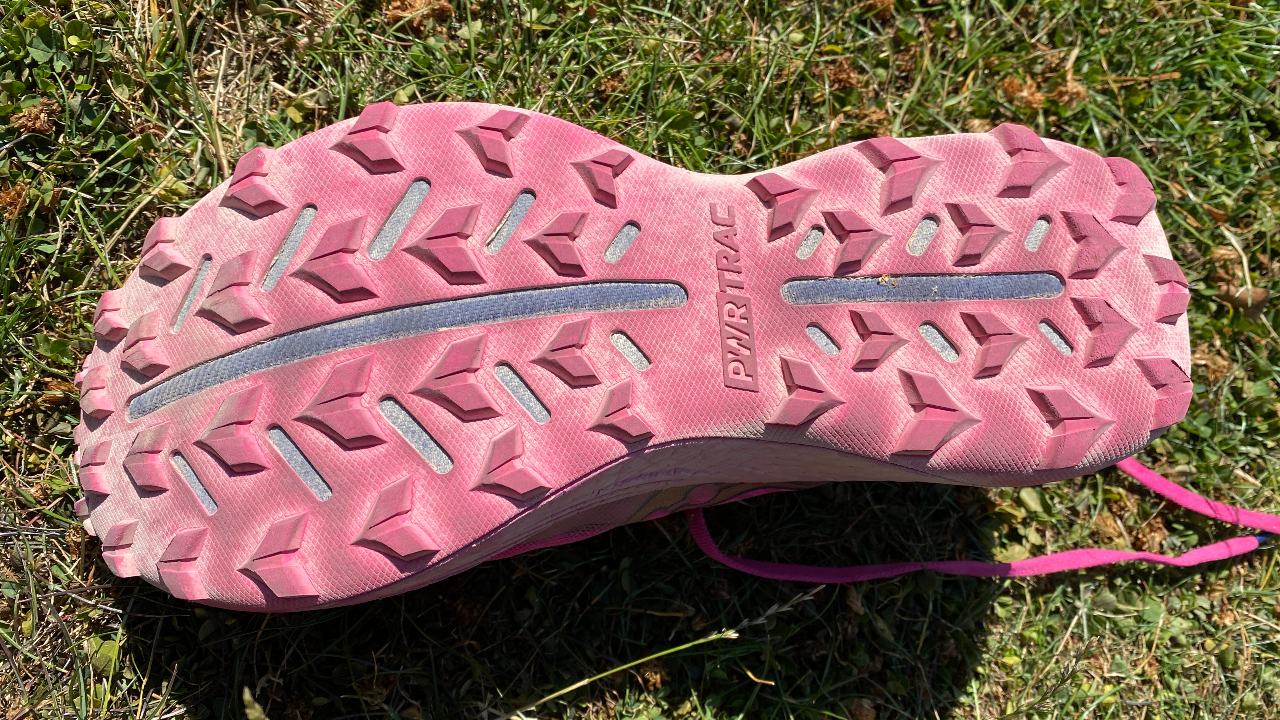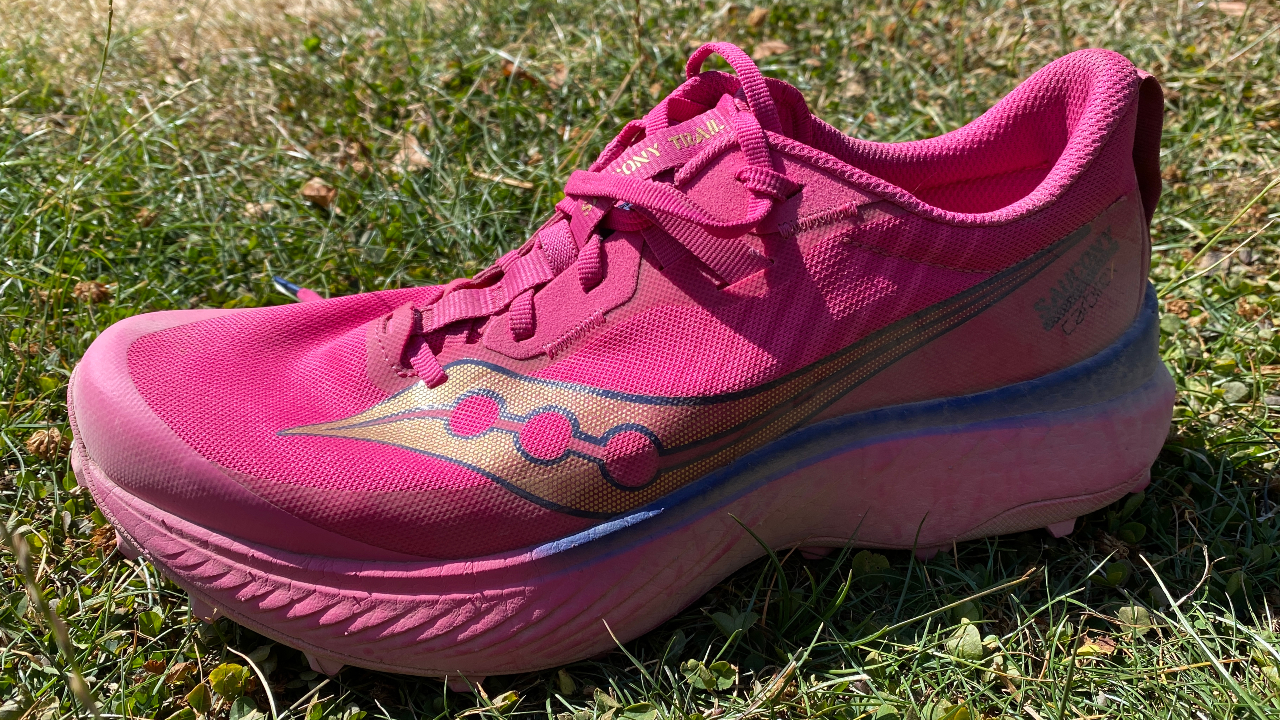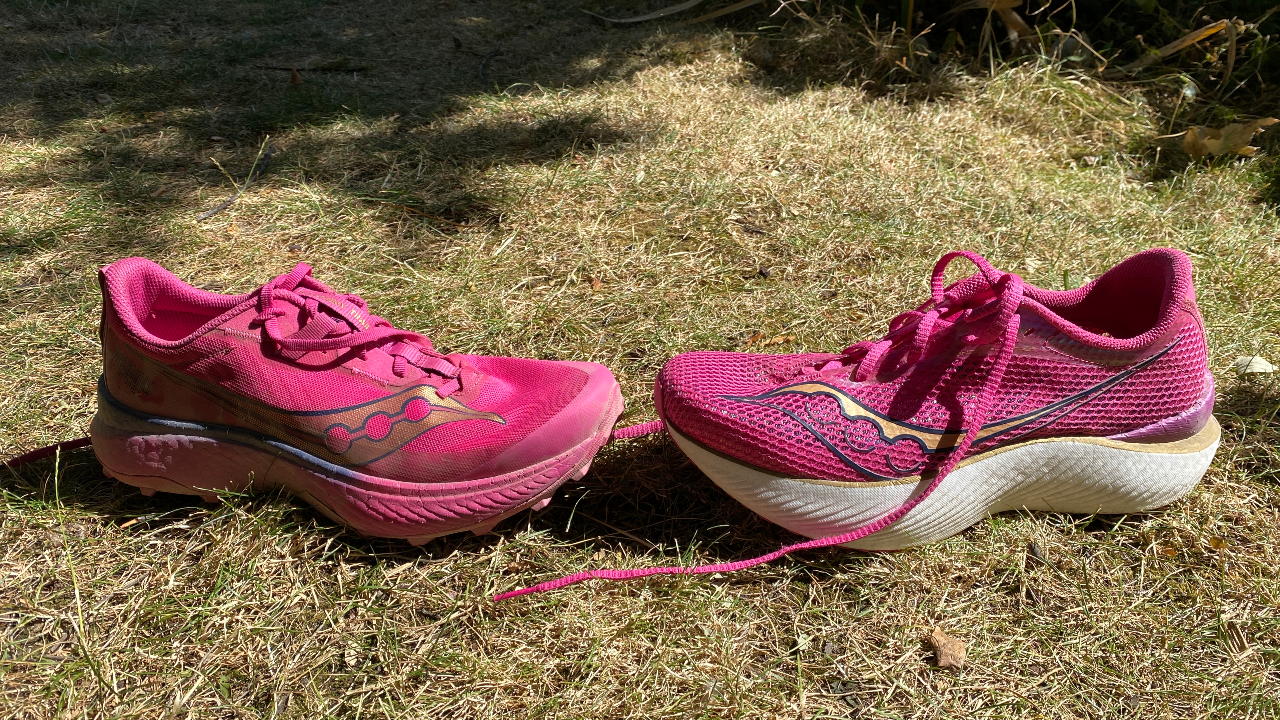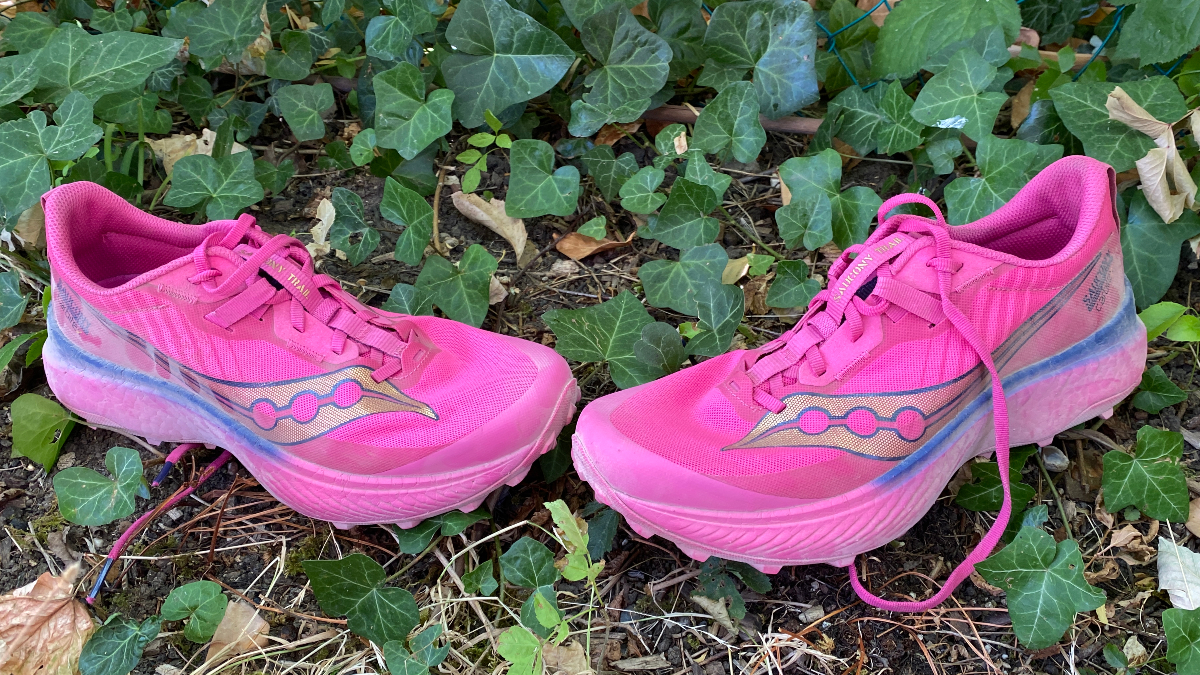Our Verdict
The Saucony Endorphin Edge rivals the Hoka Tecton X as the best carbon plate trail-running shoe and has an edge on the Hoka on technical terrain. However, it’s still hard to say that an expensive carbon plate shoe is necessarily worth it on the trails.
For
- PWRRUN PB midsole with carbon plate
- Outsole grips well
- Pretty light
Against
- Stiff on rutted ground
- Lighter shoes may be better for short races
- More expensive than rivals
You can trust Coach
The first Saucony trail shoe to bear the Endorphin name was the Endorphin Trail, which was built like a tank and more reminiscent of the Endorphin Shift cushioned road shoe than of the highly regarded Saucony Endorphin Speed and Pro lines.
This time around Saucony has clearly built a trail-racing shoe with the Endorphin Edge, which has a carbon plate and a lighter design than the Endorphin Trail. It’s a strong contender to be one of the best trail-running shoes and among the best carbon plate running shoes, with only the Hoka Tecton X carbon trail shoe as impressive for speedy off-road running.
Saucony Endorphin Edge: Price And Availability
The Endorphin Edge will launch on 1st September and costs $200 in the US and £200 in the UK, which is par for the course when it comes to carbon plate road shoes but expensive for a trail shoe. Its main rival – the Hoka Tecton X – costs $200/£175.
Design And Fit

The Endorphin Edge takes its key design cues from the Saucony Endorphin Pro 3 and Saucony Endorphin Speed 3. The midsole is made from Saucony’s PEBA-based PWRRUN PB foam and has the same Speedroll rocker geometry found on the road shoes, which promotes a smooth and efficient ride.
There is a difference in the plate used. The Pro 3 has a full-length carbon plate and the Speed 3 a full-length nylon one, but the Edge has a three-quarter length plate that is made from Carbitex AFX carbon fibre, which is more flexible than the plate on the Pro 3. This allows for extra flex and movement when on uneven trails.
The Edge has a 35mm stack height at the heel and 29mm at the forefoot, giving it a 6mm drop, and it weighs 9.5oz/268g in my UK size 9. It’s not as light as a road racer, but it’s pretty light given the high stack and the impressive outsole, which features 4mm lugs and grips well on every surface I’ve tried so far. I have been testing it in the summer, though, and the trails around me have been dry.
There is a bumper on the front of the upper to protect your toes, and cushioning around the heel and tongue, but the upper is quite stripped back. The mesh is breathable but finely woven to not let dust and debris through, and the shoe has a wide, roomy fit to let the foot swell up over long trail runs.
Sign up for workout ideas, training advice, reviews of the latest gear and more.

In my normal size I found that I had to heel-lock the Edge tightly and had a bit more room in the toe box than I really needed, even for long runs. I tend to fall between two half sizes, so if that’s you I’d consider opting for the smaller half size, but I also had no slipping or problems with the fit in my usual size.
How I Tested This Shoe
I have run 67km in the Saucony Endorphin Edge, using it on a mix of trail types, as well as some long stretches on the road. I’ve not managed to fit in an ultra-marathon but have done speedier runs in it, along with a 22km run.
Running Performance
My first couple of runs in the Edge were easy efforts in a local forest and I wasn’t especially enamoured with the experience. The shoes felt stiff and unyielding on rutted ground in particular, and would tip me off-balance on that kind of terrain. I expected a softer ride from the PWRRUN PB foam that I have enjoyed so much in the Speed and Pro road shoes, but I didn’t get that from the Edge, and it didn’t feel nimble or speedy either.

It’s fortunate that I don’t judge – or review – shoes after just a couple of runs because since those first tests, the Edge has felt better and better. The stiffness in the plate eased and it feels more flexible when on uneven ground, so you can maintain your pace. It then adds an extra pop when you do hit flatter surfaces as the plate, bouncy foam and Speedroll rocker work together to produce a smooth, speedy ride.
As with all the carbon plate trail shoes I’ve tested, it doesn’t have the wow factor you get from some carbon road shoes, which is often down to the soft, springy foams they use in partnership with a plate. Those foams would be too unstable on the trails, but PWRRUN PB is perfect because it adds bounce without being too squishy.
I did a progression run finishing at around 3min 40sec/km on forest trails and while it felt hard at the time – running fast on the trails is never as effortless as carbon shoes can make it feel on the road sometimes – the Edge protected my legs well and helped maintain pace up and down hills well.
On my longest run I added in a 2km pick-up along a dusty canal towpath and the shoe showed its speed there. On that kind of ground it provides more of a similar feel to road carbon shoes and it’s easy to see that it would be a great shoe for long off-road events on lighter trails.

The outsole is good on trickier terrain. Admittedly, I’ve only used it in the summer on dry trails, but on loose, gravelly descents it bit well to provide grip, and I’d have little hesitation taking the Edge out on pretty much any trail. It was also comfortable for fairly long stretches on the road, which surprised me, and would be a bonus in trail runs and races where you hit the asphalt in between the off-road sections.
Is The Saucony Endorphin Edge Worth It?
I enjoyed running in the Endorphin Edge and it is a great option for longer races on the trails. The Hoka Tecton X would be the main competition and I’d rate it as the more agile shoe on broken or rocky ground, but the Edge has better grip and a more impressive midsole and ride when you hit flat sections of the trails.
Either would be a good racing option, but I still have doubts about the merits of spending so much money on a carbon trail racer. If tackling short trail events I’d prefer to be in a lighter trail shoe, like the Hoka Torrent 2 or Adidas Terrex Speed Pro. For ultras, the more conventional options such as the Hoka Speedgoat 5 will probably serve you just as well as the Edge or Tecton X – and at a much lower cost. This is different from road running shoes where carbon racers have a clear advantage.
Still, if you are keen on using carbon off-road, the Edge should be a real contender and while it doesn’t deliver the same magic as the Endorphin Pro 3 road shoe in particular, it’s as close as you’ll find for hitting the trails.

Nick Harris-Fry is a journalist who has been covering health and fitness since 2015. Nick is an avid runner, covering 70-110km a week, which gives him ample opportunity to test a wide range of running shoes and running gear. He is also the chief tester for fitness trackers and running watches, treadmills and exercise bikes, and workout headphones.

